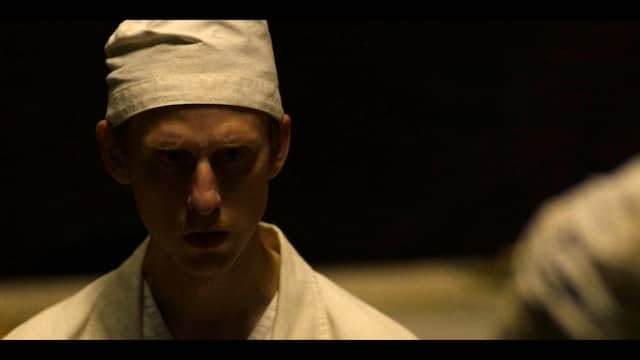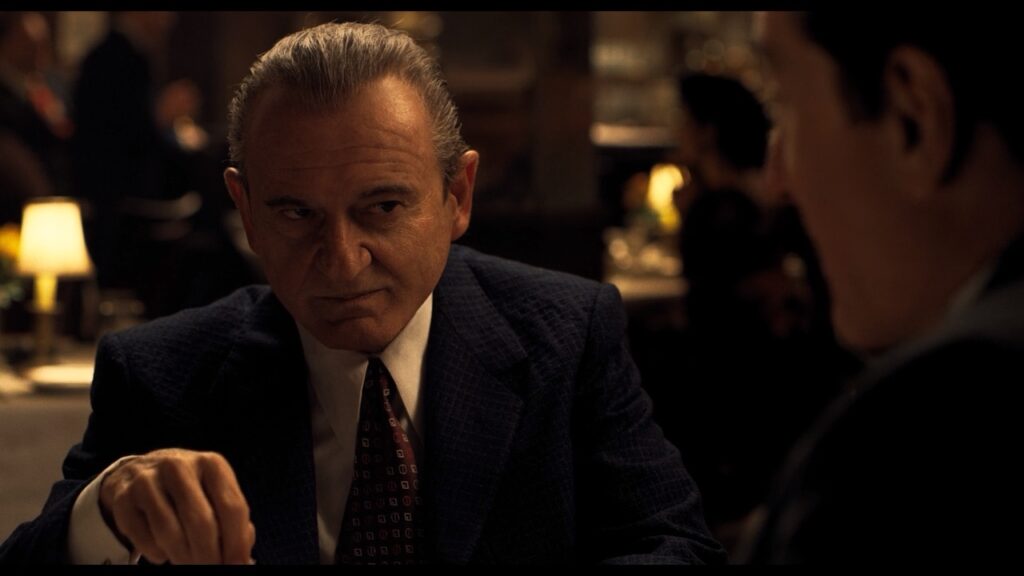“Chernobyl” Episode 1: 1:23:45 – A Harrowing Prelude to Disaster – TV Miniseries Review

Episode: 1:23:45
Season: 1
Show: Chernobyl
“Chernobyl” Episode 1 Review: “1:23:45” – A Harrowing Prelude to Disaster
HBO’s 2019 miniseries “Chernobyl,” created and written by Craig Mazin and directed by Johan Renck, plunges into the depths of one of the worst man-made catastrophes in history. The first episode, titled “1:23:45,” named after the exact time the disaster began, sets a haunting tone for the series. It masterfully combines historical detail and a tightly wound narrative to introduce viewers to the events of April 26, 1986, when the Chernobyl Nuclear Power Plant in Ukraine, then part of the Soviet Union, experienced a catastrophic meltdown that would have global consequences.
The Opening: A Gripping Introduction
“1:23:45” opens with a grim scene two years after the disaster, focusing on Valery Legasov, played by Jared Harris, on the second anniversary of the explosion. This brief prologue is both somber and foreboding, with Legasov recording tapes that explain what happened at Chernobyl before his subsequent suicide. This opening sets the narrative framework, as the series intends to unravel the causes and cover-ups surrounding the Chernobyl disaster through Legasov’s perspective.
Immediate Aftermath and the Unfolding Crisis
The episode cuts sharply to the moments leading up to the explosion at the Chernobyl plant. Viewers are thrust into the control room of Reactor 4, where deputy chief-engineer Anatoly Dyatlov, portrayed by Paul Ritter, dismissively ignores the increasing concerns of the plant operators about the reactor’s stability. The tension in the control room is palpable, with the camera work and dim lighting enhancing the growing sense of impending doom.
As the reactor explodes, the episode skillfully depicts the chaos and confusion that ensues. The disaster is not just a sudden bang but a series of events that lead to an inevitable yet shocking culmination. The immediate denial and downplaying of the reactor’s condition by Dyatlov and other officials encapsulate the tragic mismanagement that characterized the initial response to the crisis.
Characterization and Performances
The performances in “1:23:45” are profoundly affecting. Jared Harris’s portrayal of Legasov is nuanced and compelling, capturing his transformation from a relatively obscure scientist to the man who becomes the face of the investigation into the disaster. Paul Ritter’s portrayal of Dyatlov is chillingly effective; he embodies the arrogance and denial that were partly responsible for the tragedy. These characters are depicted not just as participants in the events but as symbols of the larger systemic issues that the series explores.
Themes of Mismanagement and Denial
One of the most striking aspects of the episode is its exploration of the themes of mismanagement, denial, and the dangers of state censorship. As the scale of the disaster unfolds, Soviet officials are portrayed as more concerned with bureaucracy and maintaining the facade of control rather than taking effective measures to mitigate the disaster’s effects. This theme is critical as it not only provides insight into the immediate reaction but also sets up the political and social examination that the rest of the series will undertake.
Visual and Sound Design
The visual and sound design of “1:23:45” significantly contributes to the episode’s intense atmosphere. The cinematography is stark and restrained, which mirrors the bleakness of the unfolding disaster. The use of sound is particularly noteworthy; the ominous silence after the explosion, punctuated only by the crackling of radioactive fire, creates a sense of dread and foreboding. The absence of a dramatic score during key moments makes the scenes more realistic and unsettling.
Setting the Stage
As the episode concludes, the scope of the disaster begins to dawn on the characters and the viewers. The final scenes set the stage for the series to delve deeper into the investigation, the human impact, and the subsequent attempts to contain the disaster and seek justice for those affected. The episode ends with a chilling reminder of the radiation spreading beyond the reactor site, hinting at the vast human and environmental tragedy that is about to unfold.
“1:23:45” serves as a powerful opening for “Chernobyl,” combining meticulous historical detail with compelling narrative and character development. It not only introduces the key players and the initial reactions to the disaster but also sets up the series for a deep dive into the political, social, and personal ramifications of Chernobyl. The episode is a testament to the series’ ability to engage, educate, and provoke thought, promising a profound exploration of one of the darkest chapters in recent history.
The Psychological Impact of Disaster
The first episode of “Chernobyl” extends its narrative reach beyond the immediate physical devastation to explore the psychological ramifications on those directly involved. Through characters like firefighters, plant workers, and local residents, the episode begins to unpack the human element of the disaster. Particularly poignant is the portrayal of firefighter Vasily Ignatenko and his wife, Lyudmilla, whose personal tragedy becomes a focal narrative in the unfolding drama. Their story humanizes the disaster, shifting the narrative from the macro consequences of radioactive exposure to the intimate, devastating impacts on individual lives.
Exploration of Soviet Society
“1:23:45” also sets up an exploration of the broader Soviet society’s response to the disaster, highlighting the systemic flaws of the Soviet regime. The rigid hierarchy, the reluctance to admit failures, and the overarching need to maintain a facade of power and control are depicted through interactions among Party officials, plant management, and the rank-and-file workers. This portrayal provides a critical backdrop against which the disaster unfolded, suggesting that the catastrophe was as much a product of a flawed political system as it was a technological failure.
Cinematic Realism and Historical Accuracy
The commitment to realism in “Chernobyl” is evident not only in its character portrayals and thematic depth but also in its attention to detail in set design and costume. The recreation of the 1980s Soviet era is meticulous; from the uniforms of the firefighters to the panels and machinery in the control room of the Chernobyl plant, every element is designed to reflect the period accurately. This authenticity extends to the dialogue and the characters’ interactions, which are steeped in the formalities and tensions of the time, enhancing the immersive experience for the viewer.
The Role of Information and Misinformation
A significant theme introduced in “1:23:45” is the role of information and misinformation in managing the disaster. The episode portrays the initial attempts to downplay the severity of the meltdown and the subsequent misinformation about the safety of the surrounding area. This denial and delay in communication had fatal consequences, not only for the workers and firefighters immediately involved but also for the residents of nearby Pripyat, who were left uninformed of the dangers they were facing. The series begins to tackle the dire consequences of a lack of free press and the suppression of vital information in a crisis.
Ethical Questions and Moral Ambiguity
The episode raises profound ethical questions about responsibility and accountability. It challenges the audience to consider not just the immediate decisions made during the disaster, but also the moral ambiguity of the characters’ actions. From the plant workers who followed orders despite knowing better, to the senior officials who prioritized political stability over human life, the series probes the complex layers of ethical decision-making in extreme circumstances.
Setting Up for a Deeper Dive
As the first episode concludes, “Chernobyl” sets the groundwork for a deeper investigation into the aftermath of the disaster. It promises to not only detail the physical and environmental cleanup operations but also to delve into the personal and political turmoil that followed. The episode ends on a note of impending doom, with the viewer fully aware of the scale of the disaster yet still perhaps unprepared for the human stories of courage, tragedy, and resilience that are yet to unfold.
With its powerful blend of personal drama, political intrigue, and historical detail, “1:23:45” effectively sets the stage for “Chernobyl” to explore one of the most tragic events in modern history. It leaves the audience poised for a series that not only recounts the events of the disaster but also provides a critical examination of the human factors and systemic failures that led to it. The subsequent episodes promise to build on this strong foundation, offering insights into the courage displayed by the ordinary men and women who faced unimaginable circumstances.




